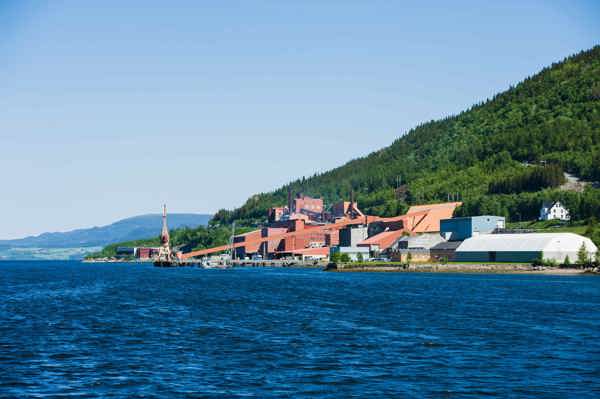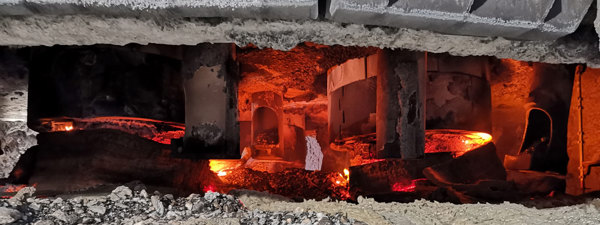- Magazine
- Trainee Blog
- From Silicon- to Carbon production
From Silicon- to Carbon production
It is now a month ago since I finished my first trainee period at Elkem Thamshavn in Orkanger, and I am now sitting in my office in Kristiansand where I have just started my second at Elkem Carbon. There has been quite a drastic change from being a student to start work at a production plant, but I have really enjoyed it.
Thamshavn is part of the Silicon Material Division at Elkem and is producing both high grade silicon and Microsilica. There are two silicon furnaces at Thamshavn, operating at 25 MW and 43,5 MW, making furnace 2 the largest one in the world(!!). In addition to this, Thamshavn has an energy recovery (ER) system which produces superheated steam to power a steam turbine and supply energy to the local district heating.

Figure 1: Elkem Thamshavn
I graduated from NTNU as a mechanical engineer and have a specialisation within thermodynamics and fluid mechanics. I wasn’t sure what tasks I would be working with at Thamshavn, but after some days I was told that I would be working with the “By-Pass Kjel” project, and that I would oversee the conceptual studies. The main objective of this project was to come up with a solution for by-passing a small portion of the off-gas from the furnace to avoid more energy being sent to the boiler. I was a bit surprised when I figured out that I had to “brush the dust” from my old heat transfer book and start to recap all I known about Nusselt number and heat coefficients, in order to perform calculations on heat transportation. It was educational and interesting to build a model, comparing and validating the model with operational data, and then use it as a basis for a new concept design.
When I started working at Thamshavn, I had no idea how a silicon plant worked. During my first weeks, I spent several hours walking around the furnaces and the ER-system, trying to put everything together. Luckily, as a trainee you are given a local mentor at each location. At Thamshavn, my mentor was Paul Wilpert, who is a process engineer working mainly with the ER-system. Paul helped me a lot during my stay, especially in the beginning with understanding how the plant works, but also with more technical questions regarding my project.
In addition to spending hours in the production facility, I was allowed to join the control room shifts for a week, to learn how the furnaces are being governed and operated. The control room operators are responsible for surveying the plant and periodically stoking the furnaces, to ensure stable operation.
One of the main goals in running the plant is to reduce the down-time of the furnaces. But of course, the furnaces need regular maintenance. Therefore, two longer stops are planned for each year, one in the autumn and one in the spring. These stops last for a couple of days, in order to complete all the various tasks that need to be done. During operation, the temperature inside of the furnace is around 2000oC, but during the down-time you have a unique opportunity to see what the inside of the furnaces looks like, together with all of the electrode-handling equipment and the ER-system. During my stay, I was able to participate on this twice. The picture below is taken during a maintenance stop and is showing baked electrodes and the still red-hot raw materials.

Figure 2: Picture of the inner part of a silicon furnace during a maintenance.
After almost six years in Trondheim, I have now moved to Kristiansand to start working at Elkem Carbon Fiskaa (ECF). Even though it is the same company, the products and processes are completely different. ECF is producing electric calcined anthracite and coke, which is the basis of the Søderberg electrode paste, ramming and stamping paste and recarburisers for the foundry industry. Here, I will mainly be working as a project engineer. I am really looking forward to start working on new projects, and of course enjoy the summer in the southern part of Norway.